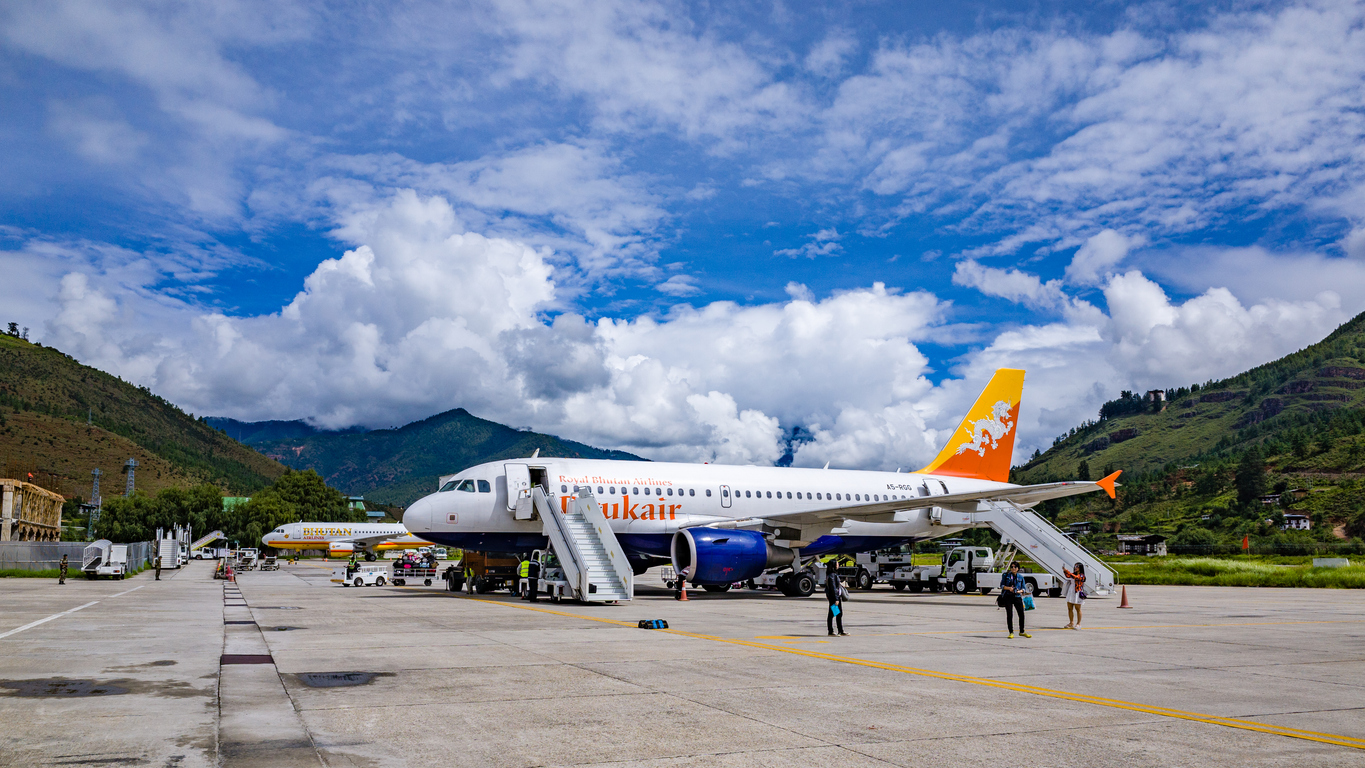Bhutan’s Paro International Airport (PBH) is listed as one of the world’s most dangerous airports, Paro presents a unique set of obstacles that only a select group of highly trained pilots should land manually and only during daylight hours. The approach requires navigating a long, winding valley between very tall mountains (18,000 feet!) and landing on a short runway (just over 7,400 feet) that isn’t visible until the very last moment. Let’s delve deeper into what makes landing here such a demanding feat.
Video by Tufan Sevincel Earthrounder Flying Adventures
Manual Mastery: Flying by Landmarks
Unlike most airports that rely on automated guidance systems, Paro requires a completely manual approach. Pilots navigate using a predetermined set of procedures and rely solely on visual landmarks throughout their descent. This meticulous process dictates the precise speed and altitude the aircraft needs to maintain at specific checkpoints along the approach.
The absence of radar adds another layer of complexity. Pilots must contend with good visibility and clear skies, as any cloud cover can disrupt the visual approach and force a diversion. As they maneuver between towering 18,000-foot peaks at a steep 45-degree angle, pilots also need to be extra vigilant of electrical poles and houses nestled on the hillsides.
A High-Altitude Drama
Paro’s high elevation, 7,364 feet (2,245 meters) above sea level, presents its own set of challenges. This altitude affects aircraft performance, limiting maneuverability and takeoff power. Adding to the pressure, the runway itself appears only moments before touchdown, with a significantly shorter approach distance compared to most airports.

Only two airlines fly to Paro International Airport
Paro International Airport isn’t for everyone. Only two airlines, Drukair, the national carrier, and the smaller private airline Bhutan Airlines, service the airport. Drukair operates a fleet consisting primarily of Airbus A319s, with a single ATR 42 turboprop and a recently acquired Airbus A320neo. Bhutan Airlines also utilizes Airbus A319s for its flights.
About Paro International Airport (PBH)
Originally constructed in the late 1960s as a helicopter base, Paro transformed into a commercial airport in the 1980s. The establishment of Drukair in 1981 marked the beginning of scheduled passenger flights, and the airport saw further development with a dedicated passenger terminal and runway improvements in the following decade.
The pandemic offered a chance for significant modernization. Paro International Airport underwent a major revamp, upgrading its infrastructure and facilities to meet contemporary standards.
A Select Group of Skilled Pilots
Drukair, estimated to have around 35 pilots total, holds a unique distinction. Only a select few within their ranks possess the specialized certification required to land at Paro.
Featured image by MC_Noppadol | iStock
Youssef Yahya is the CEO and Founder of Aviation for Aviators, a platform dedicated to the aviation industry. With over 3 years of experience as an aviation writer, Youssef is passionate about sharing his insights on aviation, entrepreneurship, and the broader business landscape. As a Teaching Assistant in Entrepreneurship at Nile University, he also nurtures the next generation of entrepreneurs. When he’s not exploring the skies or business ventures, you can find him saying, ‘Drag your coffee, and let’s talk aviation, entrepreneurship, and football.’
You might also like:
- Principles: Part of Aircraft propulsion systems
- Smoke Incident Delays Emirates Flight EK547
- The Satellite That Started the Space Race
- How is the War in Ukraine affecting commercial aviation?
- Fly Further with Emirates & United Airlines’ Codeshare Partnership for Enhanced Travel Options
Discover more from Aviation for Aviators
Subscribe to get the latest posts sent to your email.

